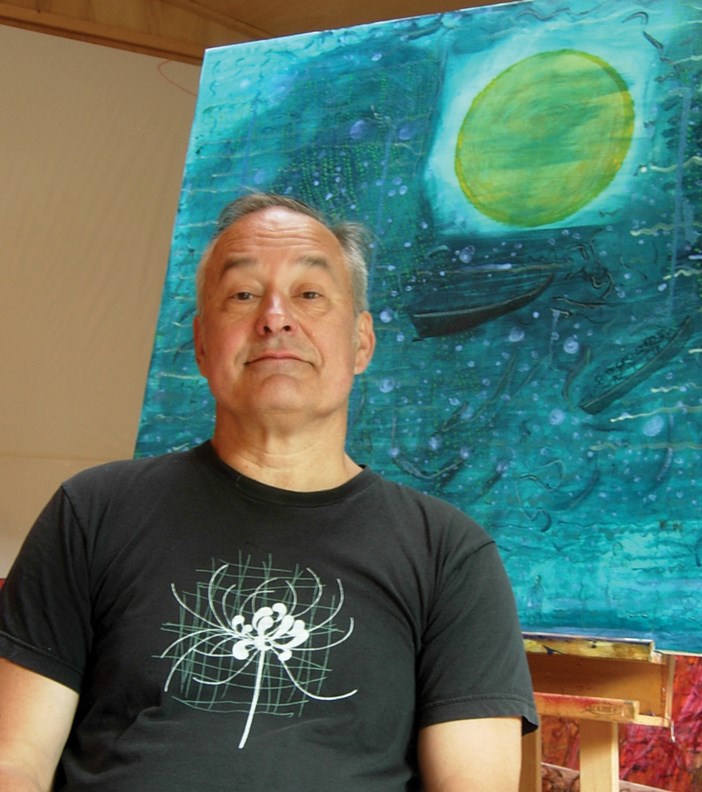Bees of the Invisible by Ramon Kubicek is showing at Gibsons Public Art Gallery, July 23 to Aug. 21, with an opening reception on July 25 from 4 to 6 p.m. Bee there or risk missing a meeting with the gods.
Since Kubicek retired from teaching, his Roberts Creek studio has been buzzing with ideas for an art show with a delicious message: “As honey is to the bee, so is art to the artist.”
Art as honey! Both are gifts that derive from mysterious processes. That mystery has produced a startling array of images that shout and whisper and tease and sometimes even contradict themselves. The more time spent gawking at these pieces, the more fun they become.
Kubicek’s honey-coloured canvas titled Melissae concerns the history and legend of honey. In Greek mythology, the Great Mother was Melissa (the Queen Bee). The Melissae were her bee-priestesses, nymphs that nursed the infant Zeus, not on milk but honey.
“Bees make us think of the sweetness of life,” says Kubicek, “so I’m hoping we’ll ask ourselves what we’re doing with our own lives. What is our contribution? What do we produce?”
Kubicek’s production techniques feature acrylics, oils, oil sticks, pens, and crayon. You’ll also find sand, minerals, crystals, and the occasional magazine cut-out. No actual honey. Bees you’ll find if you look closely.
Kubicek borrows his Bees of the Invisible theme from the poet Rainer Maria Rilke (1875-1926). To Rilke, the creative process was about gathering experience from the material world, then submitting it to the invisible world of the artist’s feelings, imagination, and spirit. The resulting product was offered back as “honey” or “art.”
At least, that’s the idea.
“Now with the potential disasters afflicting bees,” says Kubicek, “I see a correspondence between the degradation of art and degradation in the natural world.”
By no means are bees crawling over every one Kubicek’s canvases. Ship of Fools speaks of a voyage, spiritual perhaps, because things appear to be floating in air as much as on water. We see people in boats, and people left behind. “The most beautiful moments are about loss,” says Kubicek. “They are also fleeting, such as a sunset, or a child growing up.”
One image is dominated by what looks like a vortex, a whirlwind. “It’s the dark centre of something where we might vanish and be transformed,” says Kubicek. “Not only is the best art transformative, but the act of coming together to appreciate art is enough to summon the gods.”
The idea goes back to the ancient Greeks. Artists were under pressure to get it right or the gods wouldn’t make an appearance. But if the artist put their heart into it, and didn’t take themselves too seriously, then the gods had no choice but to show up. Who wouldn’t rush to the theatre or gallery where gods were in attendance?
Check out Kubicek’s show and see if you don’t find yourself buzzing with a certain sweet contentment.



